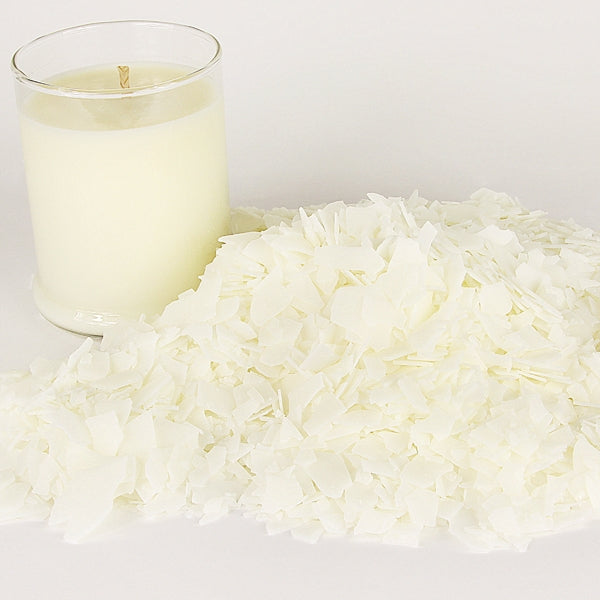Illuminate Your Setting with Crystal Soy Candles and Home Fragrance
Illuminate Your Setting with Crystal Soy Candles and Home Fragrance
Blog Article
From Wick to Wax: Understanding the Chemistry Behind Soy Wax Candles and Their Environmental Impact
As we illuminate our spaces with the warm glow of candles, there exists a realm of detailed chemistry behind the apparently basic act of lighting a soy wax candle. The option between soy and paraffin wax expands beyond mere visual appeals, delving into the world of ecological influence and the extremely composition of the materials. Understanding the molecular framework of soy wax and its burning procedure clarifies the emissions released right into our surroundings. Join us as we unravel the scientific details behind soy wax candles and discover their ramifications on our environment.
Soy Wax Vs. Paraffin Wax
When comparing soy wax and paraffin wax for candle making, it is vital to comprehend the unique attributes and advantages of each material. Soy wax is an all-natural, renewable energy acquired from soybean oil, making it naturally degradable and environment-friendly - candles. On the other hand, paraffin wax is a result of petroleum refining, which increases concerns concerning its environmental impact and sustainability
Soy wax candles shed cleaner and release less soot contrasted to paraffin wax candles, making them a healthier option for interior air top quality. Additionally, soy wax has a lower melting factor, enabling a longer-lasting candle light that spreads scent better. Paraffin wax, on the other hand, has a tendency to burn faster and less easily, potentially releasing damaging chemicals right into the air.
From a sustainability viewpoint, soy wax is preferred for its biodegradability and renewable sourcing, lining up with the expanding customer preference for environmentally conscious products. While paraffin wax has actually been a typical choice in candle making because of its price and convenience of use, the shift towards environmentally friendly alternatives like soy wax is getting momentum in the industry.
Chemical Composition of Soy Wax

Burning Process in Soy Candles
The chemical make-up of soy wax directly affects the burning process in soy candle lights, affecting variables such as shed time, aroma launch, and ecological influence. When a soy candle light is lit, the warm from the flame melts the wax near the wick.
The burning efficiency of soy candles is affected by the pureness of the soy wax and the quality of the wick. A clean-burning soy candle light with an appropriately sized wick will create a constant fire this contact form and reduce soot formation. This not just extends the shed time of the candle light however also boosts the release of fragrances. Additionally, soy wax candle lights have a lower environmental impact compared to paraffin candles because of their naturally degradable and eco-friendly nature.

Environmental Advantages of Soy Wax

Considered a lasting choice to conventional paraffin wax, soy wax offers remarkable environmental benefits that make it a popular choice among eco-conscious customers. One significant advantage of soy wax is its sustainable sourcing. Soy wax is derived from soybean oil, which is mostly grown in the United States. The farming of soybeans helps sustain local farmers and lowers the dependence on non-renewable fossil gas used in paraffin wax manufacturing. Additionally, soy wax is eco-friendly, meaning it breaks down naturally without releasing unsafe toxic substances right into the atmosphere. This characteristic makes soy wax candles a much more ecologically pleasant option contrasted to paraffin review wax candle lights, which are made from oil, a non-renewable resource. Additionally, soy wax burns cleaner and creates less soot than paraffin wax, adding to far better interior air top quality and minimizing the demand for cleaning and maintenance. On the whole, the environmental benefits of soy wax straighten with the expanding demand for green and sustainable products in the marketplace.
Recycling and Disposal Factors To Consider
Reusing and correct disposal of soy wax candle lights play a critical role in keeping environmental sustainability and decreasing waste in households and communities. The very first action is to make sure that the candle has melted completely when it comes to recycling soy wax candles. This can be achieved by permitting the candle light to burn till the wick is no much longer functional, and after that letting the remaining wax cool and strengthen. When the wax has solidified, it can be very carefully eliminated from the container.

In regards to disposal, if recycling is not an alternative, soy wax candles are eco-friendly and can be securely disposed of in the majority of household waste systems. Nonetheless, it is constantly advised to examine with neighborhood reusing facilities or waste management solutions for details guidelines on candle disposal to ensure proper handling and ecological security.
Final Thought
In conclusion, the chemistry behind soy wax candle lights discloses their ecological advantages over paraffin wax candles. Soy wax, acquired from soybean oil, burns cleaner and generates less residue when compared to paraffin wax.
When comparing soy wax and paraffin wax for candle light production, it is vital to comprehend the unique characteristics and advantages of each material (home fragrance).Soy wax candles shed cleaner and discharge less soot compared to paraffin wax candle lights, making them a healthier option for indoor air quality.Taken into consideration a sustainable option to conventional paraffin wax, soy wax supplies remarkable ecological benefits that make it a prominent selection among eco-conscious customers. Soy wax burns cleaner and produces much less soot than paraffin wax, contributing to better indoor air top quality and reducing the demand for cleaning and maintenance.In final thought, the chemistry behind soy wax candles reveals their ecological advantages over paraffin wax candle lights
Report this page